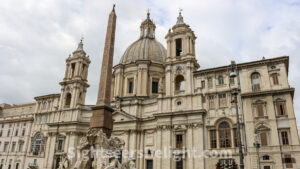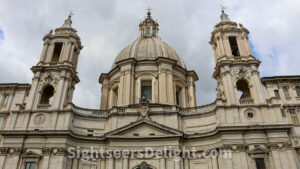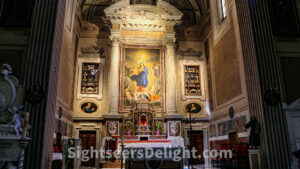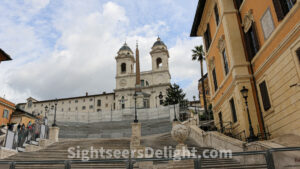Piazza Navona was built on the former site of the first-century Stadium of Domitian, also know as Circus Agonalis (competition arena), following the form of the open space of the stadium. It was converted to a public square in the 15th century, and Pope Innocent X, who reigned from 1644 until 1655, is credited with transforming it into an example of Baroque Roman architecture and, largely because his family palace, the Palazzo Pamphili, faced the piazza.
The 17th-century Baroque Sant’Agnese in Agone faces Piazza Navona, the location where the Saint Agnes, an early Christian saint, was martyred in the ancient Stadium of Domitian. Pope Innocent X instigated construction of the church, which began in 1652. Architects Girolamo Rainaldi and his son, Carlo Rainaldi, oversaw construction as did architect Francesco Borromini.
Capuchin Crypt
For a uniquely different perspective of the “Eternal City,” head over to the Capuchin Crypt. Located beneath Santa Maria della Concezione dei Cappuccini, the crypt is home to skeletal remains of thousands of bodies said to be Capuchin friars buried by their order, which adorn the crypt’s walls as a tribute to how swiftly time on Earth passes and humans’ mortality.
The Spanish Steps or Scalinata di Trinità dei Monti in Italian links Piazza di Spagna and Piazza Trinità dei Monti, which is home to the church of the Santissima Trinità dei Monti or Trinità dei Monti. Francesco de Sanctis designed the staircase, which was completed in 1725.




